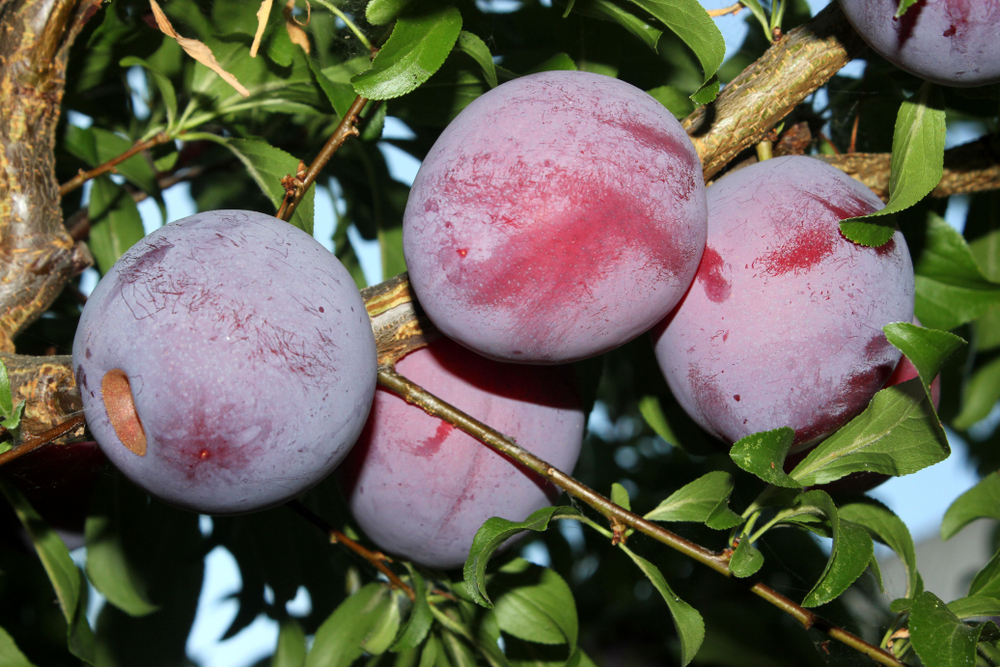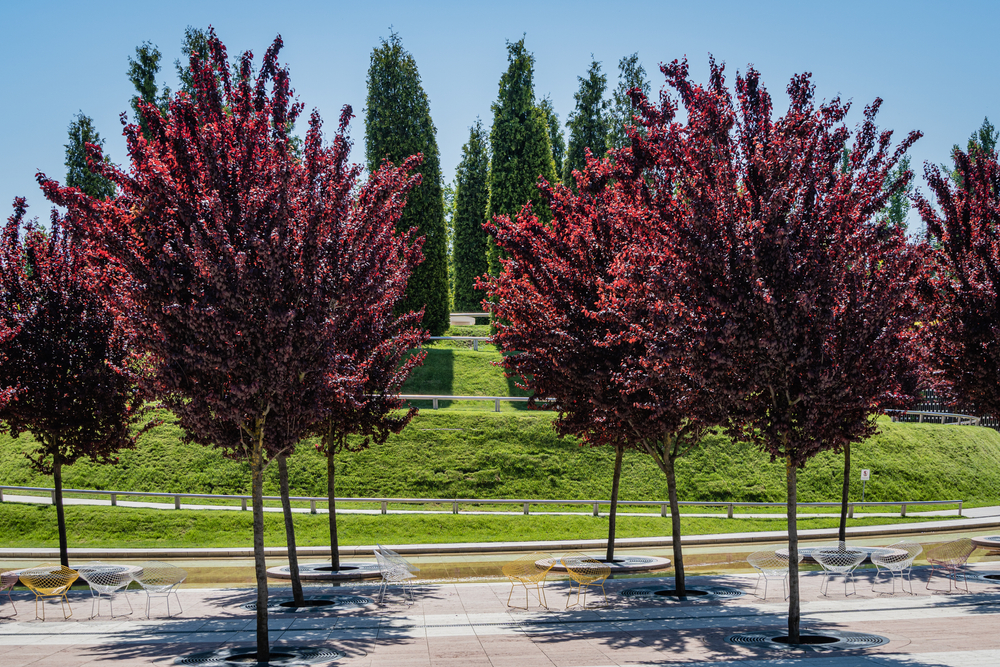There are several plum trees in Texas, but the Japanese plum tree varieties grow particularly well in the state. Japanese plum trees do better in the warmer climate than other plum trees varieties, such as European plum trees.
Japanese plum trees are preferable because they only need 700 to 1,000 winter chill hours of temperatures between 32-45 F. They are also self-fruitful, so they will yield more if they’re planted together due to cross-pollination.
Plum Trees in Texas
The beautiful plum trees on this list are primarily between hardiness zones of 5 through 9 making them ideal for the warmer Texas climate.
Santa Rosa Plum Tree
Santa Rosa plum trees are self-fertilizing trees that produce large, high-quality fruit. The fruit generally ripens in July and August and is eaten fresh or canned. They will mature after three to five years, much faster than other plum tree varieties.
The fruit they produce is large with a red to purple color. It is sweet and rarely too tart. It’s used in a variety of dishes, from savory to sweet. They require around 500 chill hours and well-drained soil. They also do best in a zone between 5 and 9.
3-in-1 Plum Tree
3-in-1 plum trees produce three different fruits from the same tree. They’re a great choice if you want to grow more than one type of plum but don’t have the space to plant several trees. These unique trees are often sought after for the surprise value they offer. When you grow one, you won’t know which plum variety you’ll get until it fruits.
These trees usually have pink to white blossoms, green leaves during peak season, and autumn colors in the fall. They’re also self-fertile and do well alongside other Japanese plum trees. They grow to around 15-20 feet in height, making them an ideal addition to any garden or yard.
Elephant Heart Plum Tree
The elephant heart plum tree has large, heart-shaped plums that grow well in Texas. These trees bloom early in the season, requiring fewer chill hours and a zone between 5 and 9. They’re also best grown alongside a beauty or Santa Rosa plum tree.
They also produce more flowers and leaves than European plum trees do. Their fruit is sweet with a little tartness.
2-in-1 Plum Surprise Tree
This incredible tree is hand-grafted and offers two different plums on the same plant. These resilient trees thrive in most environments, including in the warmer Texas weather. They grow in a hardiness zone between 5 and 8 and reach 12 feet tall.
They’re also able to bear fruit within the first year they’re planted due to how the trees are grafted. These trees also require very little upkeep to ensure they fruit every year.
Hollywood Plum Tree
The Hollywood plum tree is a beautiful plum tree that grows well in Texas. It’s well-loved for its dark purple leaves and valuable and delicious-tasting fruit. This is a wonderful choice of plum tree for Texas if you’re looking for something that ticks all the boxes.
These trees do best when planted alongside another Japanese plum tree to encourage cross-pollination. These trees also produce pink blossoms that look great around any garden.
Burgundy Plum Tree
A burgundy plum tree is a popular option with gardeners and farmers in Texas due to its tasty fruit and burgundy leaves. The fruit is maroon-colored with only a little tart flavor. They’re well-loved by many and are a great choice if you live in a slightly cooler part of texas. They grow to around 12-15 feet in height and a similar width when mature.
These trees produce a great deal of fruit and do so quickly! They’re also loved for their pollinating abilities and are sometimes planted to encourage growth in other, less hardy plum trees. The plums they produce contain tiny pits as well. So, in general, you’ll have more fruit to enjoy.
Conclusion
If you’re looking to plant plum trees in Texas, several varieties are likely to suit your warmer climate. Japanese plum trees like the burgundy, Hollywood, and elephant heart do well as they require fewer chill hours and are less affected by higher temperatures.


